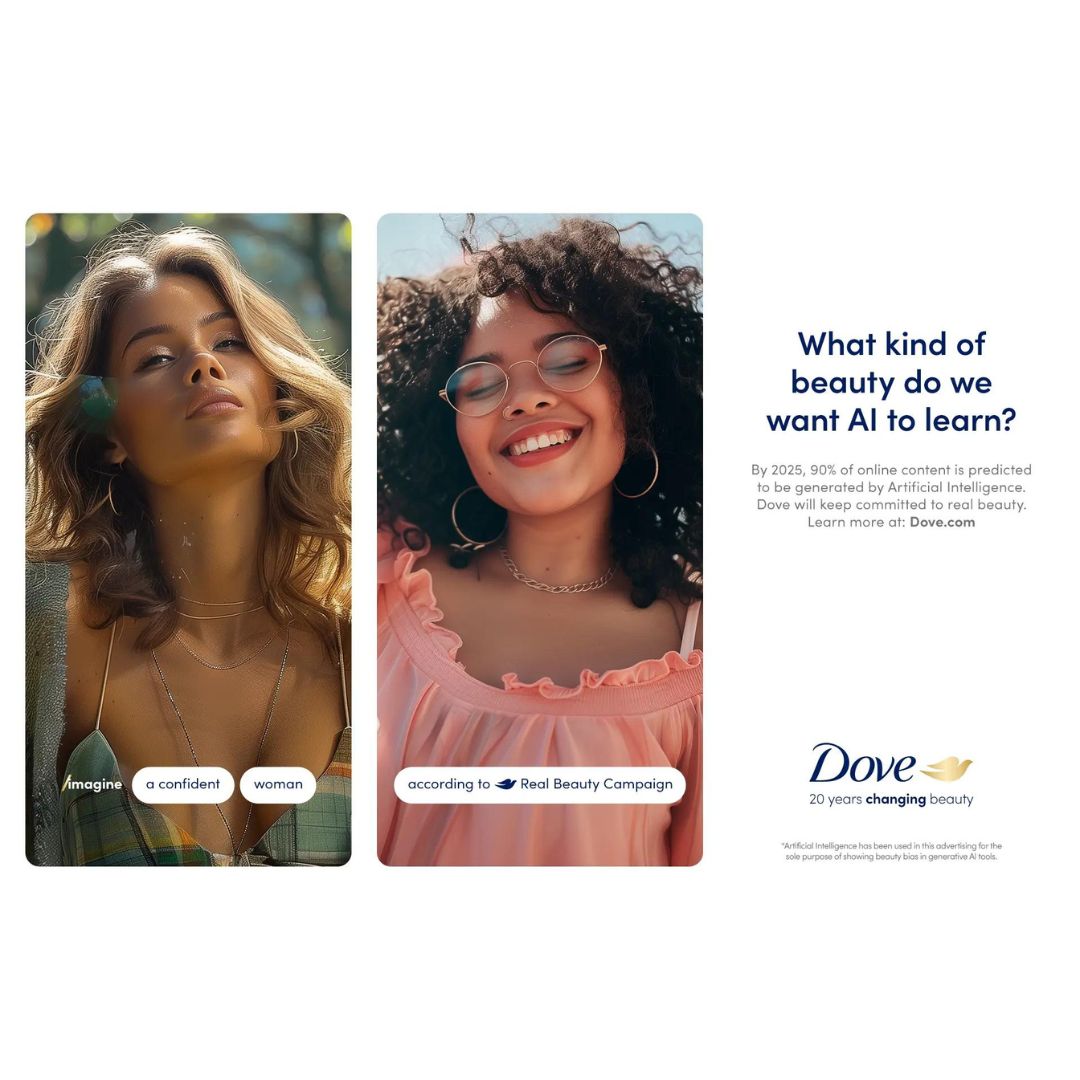What was the challenge?
Dove faced the challenge of maintaining authenticity and trust in an industry increasingly relying on artificial intelligence (AI) to generate idealised images of beauty. The brand recognised the potential negative impact of AI-generated images on consumer perceptions of beauty standards.
What action did they take?
Dove became the first beauty brand to ban the use of AI-generated women in its advertising campaigns. This decision aligned with its long-standing commitment to real beauty and transparency in its marketing practices.
What were the results?
By taking a stand against AI-generated imagery, Dove reinforced its brand identity as an advocate for authentic and inclusive beauty standards. This move likely enhanced consumer trust and loyalty, setting a precedent in the beauty industry for ethical advertising.
What marketing lessons can we learn?
- Brand Consistency: Upholding core brand values in marketing strategies can strengthen consumer trust and loyalty, regardless of what cool new technology is on the market.
- Ethical Marketing: Taking ethical stances in advertising can differentiate a brand in competitive markets, especially if the general public knows you have consciously done that based on your beliefs.
- Consumer Advocacy: Advocating for consumer interests, such as promoting realistic beauty standards, can enhance brand reputation and influence.

Conclusion
Dove’s move to ban AI-generated images from their ads is a bold statement about staying true to their roots in promoting real and inclusive beauty standards. By sticking to this approach, they not only keep the trust of their customers but also set a trend in the beauty industry for more ethical advertising. This strategy underlines how crucial it is for brands to keep it real with their audience, especially when it comes to sensitive issues like body image and self-esteem.

